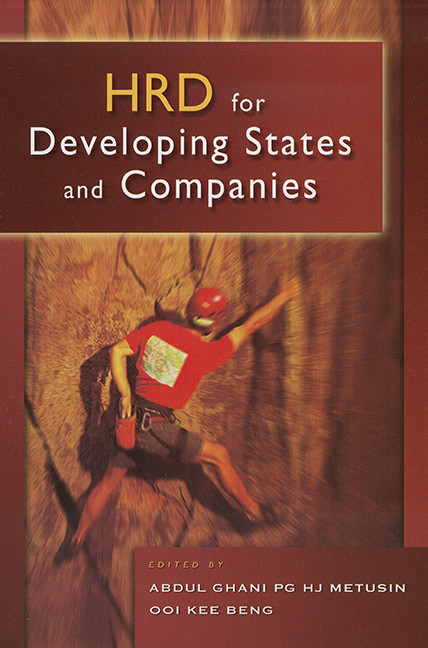Book contents
- Frontmatter
- Contents
- Foreword
- Preface
- Editorial Remarks
- Acknowledgements
- Introduction
- HRD for Statesmen
- HRD Strategies for Companies
- 7 Crafting and Implementing a Strategic HR Programme
- 8 Enhancing Human Capital in the New Economy
- 9 Competency Development for Superior Performance
- 10 Leading with Emotional Intelligence
- 11 Diversity in Work-Life Programmes
- 12 Strategic HR — Making Do or Doing More?
- Competence Development
- Corporate Experiences
- About the Authors
10 - Leading with Emotional Intelligence
from HRD Strategies for Companies
Published online by Cambridge University Press: 21 October 2015
- Frontmatter
- Contents
- Foreword
- Preface
- Editorial Remarks
- Acknowledgements
- Introduction
- HRD for Statesmen
- HRD Strategies for Companies
- 7 Crafting and Implementing a Strategic HR Programme
- 8 Enhancing Human Capital in the New Economy
- 9 Competency Development for Superior Performance
- 10 Leading with Emotional Intelligence
- 11 Diversity in Work-Life Programmes
- 12 Strategic HR — Making Do or Doing More?
- Competence Development
- Corporate Experiences
- About the Authors
Summary
ABSTRACT
To lead with emotional intelligence is to inspire, to motivate, to instill a sense of worth, belonging, confidence, and to compel others to work to their fullest potential. Successful leadership is measured by the emotions of others. How does one develop such leadership skills? Leadership experts seem to agree that it requires an inside-out approach to developing leaders. It becomes critical for leaders to increase their awareness of their ability to manage themselves and their relationships with others. Emotional intelligence appears to be in addition to cognitive intelligence, as measured by one'sIQ, and not a component of it. To lead with emotional intelligence involves an examination of the foundational skills and competencies that underlie leadership competencies. It involves a thorough understanding of the component parts of emotional intelligence and how each one can be developed in the workplace for greater organizational effectiveness.
INTRODUCTION
Where are the leaders who inspire us, motivate us and make us feel that we can achieve great things? Where are the leaders who, when we are with them, give us a sense of self-confidence and self-worth, and we feel like we “belong”? Where are the leaders who make us feel good? We feel like we do our best work for leaders when we have these qualities. We do not want to leave leaders who make us feel these positive emotions. I suggest that leaders with these qualities are out there, but 1 think it is also safe to say the world could do with more of them. This paper will discuss the difference between leaders and managers and what skills need to be developed to create more leaders who are able to inspire workers for maximum organizational effectiveness.
- Type
- Chapter
- Information
- HRD for Developing States & Companies , pp. 68 - 76Publisher: ISEAS–Yusof Ishak InstitutePrint publication year: 2005

